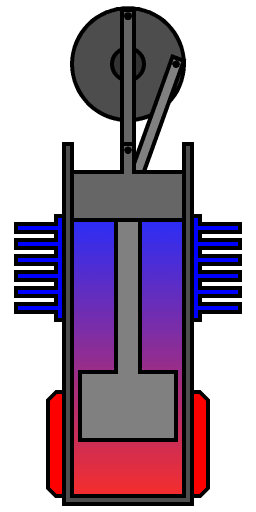BIOTHERMAL SYSTEMS

Sludge Processing
Biogas & Biothermal Energy
The Renewable Heat Incentive
Sludge Processing
Biogas & Biothermal Energy
The Renewable Heat Incentive
Sludge Processing & Biothermal Energy
The anaerobic digestion of biological waste produces biomethane and sludge waste. The gas is injected into the distribution grid, and may fuel a sidestream chp generation plant for site consumption. The drawn-off sludge is subject to a chain of thermal processes by which it is pasteurized and dried. It is first pre-heated in double-pipe trombone exchangers prior to batch sterilization in jacketed vessels, and then dried for use as fertilizer, or mixed with other ingredients to produce a biosolid compost. We undertake the thermal design of heat exchangers and vessels used in the process, including piped systems and controls.
Waste Wood as a Fuel
Mainstream industrial wood waste heating equipment tolerates a wide range of fuel types, and is usually equipped with buffer storage silos for continuous unattended operation. Stand-alone industrial composite board and wood burning installations are frequently linked to manufacturing output as a means of on-site waste management. Where sites are able to use their own derivative biowaste to fuel an on-site heating system, they are eligible for registry with the Biomass Suppliers List. Our Gallery page shows a 260 kW wood waste heating installation at a Midlands furniture factory, built around the economizer version of a boiler manufactured by Wood Waste Technologies. We have designed and built several wood waste heating plants, and associated factory heating installations. We have helped our clients register with the Renewable Heat Incentive (RHI), and gain self-supplier status on the Biomass Suppliers List (BSL).
Micro CHP
Biothermal energy technologies are straightforward and well established, to the extent that generous funding incentives set-up to encourage and promote renewable energy concepts are being gradually reeled-in. The lower end of the combined-heat-and-power market is more difficult, given disproportionate ratios between thermal and electrical outputs. While Stirling Cycle engines have practical efficiencies of some 30%, a typical chp boiler for the domestic market delivers just 1 kWe for a thermal rating of 25 kWt.
For any chp scheme to be effective, there must be a strong, continuous base load requirement for the heat produced as a by-product of electrical generation. This has proved untenable for most domestic economies, although light industrial wood waste heating plants have the capability to drive power equipment given re-formatting of their combustion and heat recovery stages.
There is an inverse relation between boiler- and engine-driven systems: in the former, boiler heat output governs generating capacity of wood waste chp installations, while in engine-generator systems electrical demand governs heat production. Flexible micro chp is engine-based: practicable machines start at about 15 kWt output as waste heat from engine generators producing 5 kWe.

